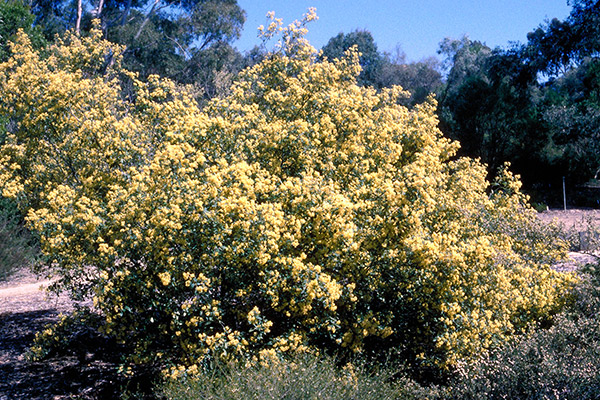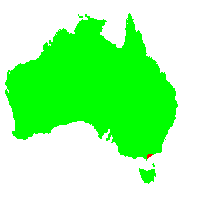General Description:
Pomaderris is a genus of about 70 species almost totally confined to Australia but eight species are found in New Zealand. They are small to large shrubs (occasionally trees) usually with short hairs on young stems and leaves and clusters of small cream to yellow flowers. In Australia the genus is found in all states with the greatest concentration being in south-eastern New South Wales and eastern Victoria.
Pomaderris aurea is a small, spreading shrub to about 1.5 metres tall by about 2 metres wide. Leaves are elliptical to oval shaped, 25 – 30 mm long, dark green above and hairy on the undersurface. The small, yellow flowers occur in loose, globular-shaped clusters about 30 mm in diameter at the ends of the branches in spring. Pomaderris aurea will be found in some references as Pomaderris humilis
Pomaderris species are not seen often in cultivation probably due to difficulties in propagation. Many are very floriferous and deserve wider cultivation. P.aurea is definitely in this category as its moderate size, attractive foliage and colourful flowering would make it an asset in any garden. It prefers well drained soils in full sun or light shade and is tolerant of at least moderate frost.
Propagation can be carried out from seed which usually germinates well following treatment with boiling water (similar to the method used for Acacia and the pea-flowered plants – see general notes on propagation from seed). Seed is shed from the plant when ripe and is difficult to collect. Cuttings of hardened, current seasons growth can be successful but they are usually very slow to strike and the success rate is usually well below 100%.

Pomaderris aurea
Photo: Brian Walters
 Australian Native Plants Society (Australia)
Australian Native Plants Society (Australia)